Blogs
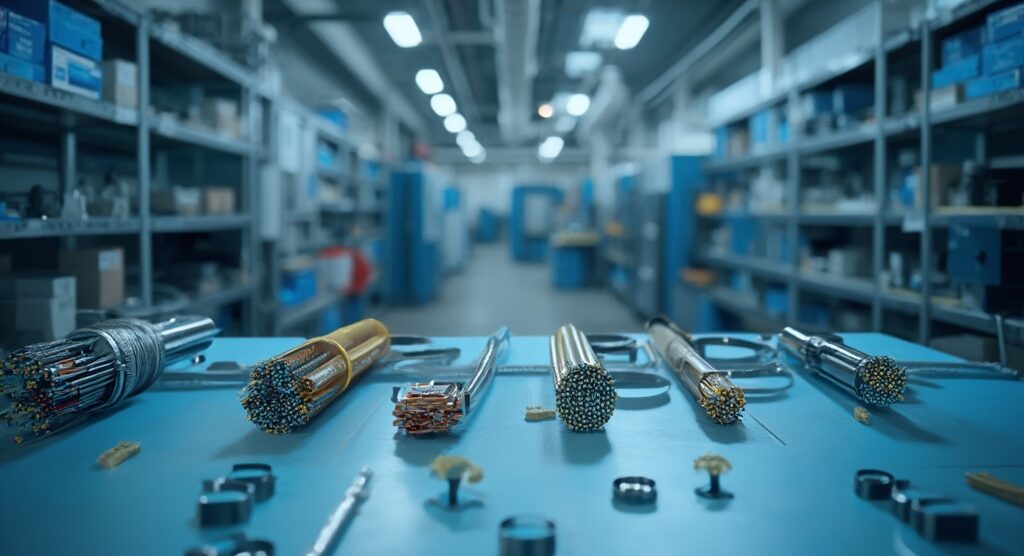
Understanding High Temperature Cables: An In-Depth Tutorial for Engineers
Introduction
In an era where industrial demands are constantly evolving, high-temperature cables have emerged as a cornerstone for ensuring safety and performance in extreme environments. These specialized cables, such as Domadia’s Mica Tapes, are engineered to withstand temperatures exceeding 150°C, making them vital in sectors like aerospace, automotive, and industrial automation.
Understanding the intricacies of these cables—from their material composition to their diverse applications—equips procurement managers and engineers with the knowledge necessary to make informed decisions. As industries push the limits of technology, the ability to select the right high-temperature solutions becomes not just a preference, but a necessity for maintaining operational integrity and safety.
This article delves into the key concepts, benefits, and challenges associated with high-temperature cables, offering insights that can drive strategic purchasing and enhance project outcomes.
Introduction to High Temperature Cables: Key Concepts and Definitions
High temperature cables, including Domadia’s Mica Tapes, are designed to operate reliably in conditions exceeding standard temperature limits, usually above 150°C (302°F). These high temperature cables are designed to endure extreme conditions, making them essential in sectors such as aerospace, automotive, and industrial processes. Key considerations include:
- Temperature rating: which indicates the maximum temperature the wire can endure.
- Insulation type: which influences both performance and safety.
Domadia’s products not only demonstrate excellent flame resistance and dielectric strength but also offer essential insulation for high-voltage machinery and fire-resistant cables. The mineral sheet tape, with its high mechanical strength, is particularly suitable for insulating large flat surfaces in challenging environments. Understanding these concepts is crucial for procurement managers and engineers aiming to select the appropriate solutions for their specific applications.
To explore our range of Mica Tapes and learn more about how they can benefit your business, visit our website or contact our expert team today.
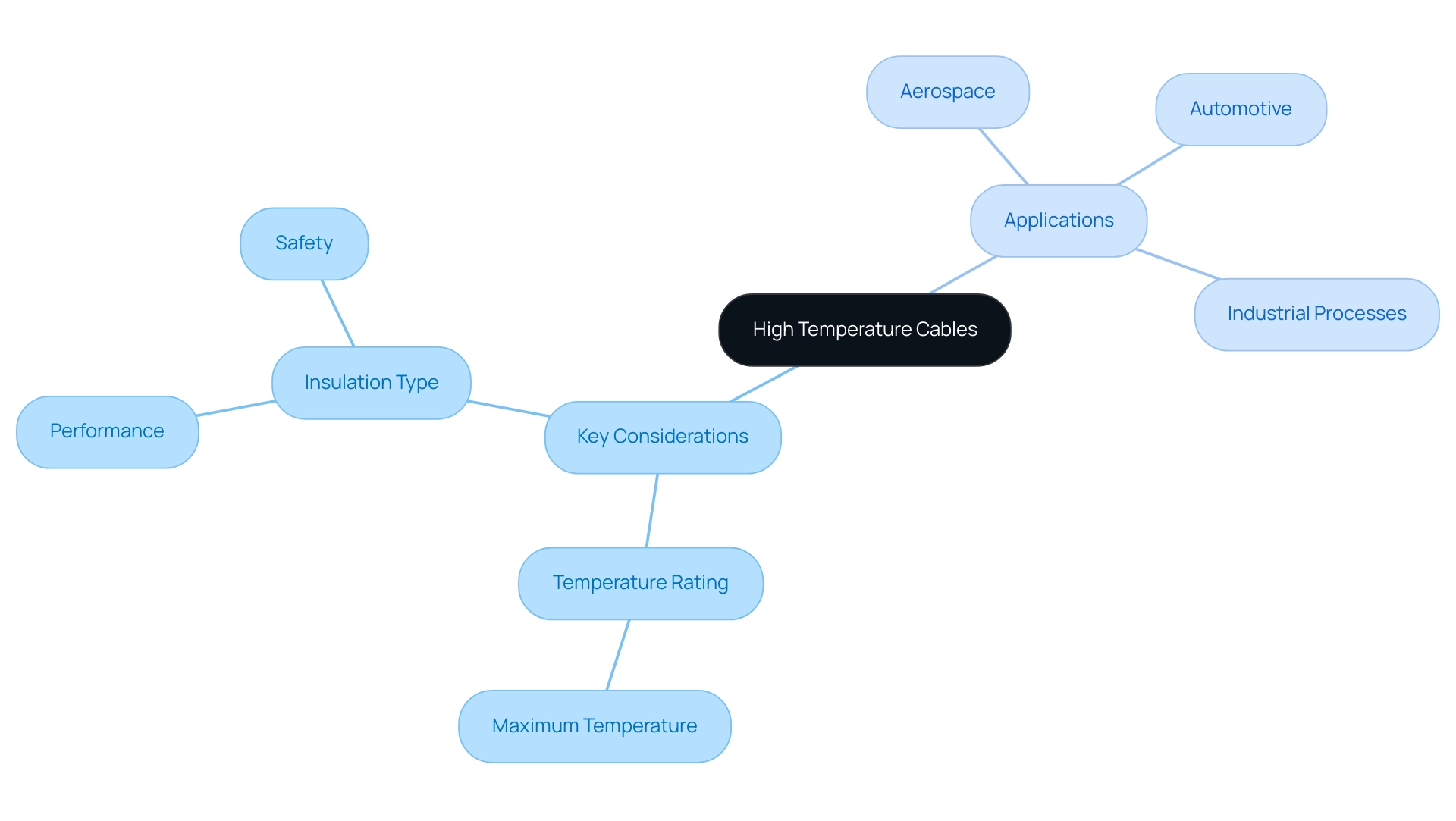
Materials Used in High Temperature Cables: Composition and Benefits
Materials such as halogen-free silicone, fluoropolymers, and polyimides are commonly used to manufacture high temperature cables. Halogen-free silicone covering, for example, provides excellent thermal stability and resistance to flames, making it ideal for use in industries where safety is paramount. Fluoropolymer coatings provide exceptional chemical resistance and low friction characteristics, ideal for use in demanding chemical settings.
To improve these solutions, Domadia’s products offer a strong choice for high temperature cables that ensure high-temperature resistance and electrical protection across various applications, including in the production of fire-resistant wires. Our tape products are characterized by:
- High dielectric strength
- Temperature resistance up to 1000°C
- Exceptional mechanical properties that ensure reliability in extreme conditions
Furthermore, our electrical wire protection sleeves, created for various uses like automotive, aerospace, and industrial machinery, showcase:
- High dielectric strength
- Flame retardance
- Flexibility
- Abrasion resistance
This guarantees the reliability and safety of wires in challenging environments.
Comprehending the particular advantages of each material, including our tape products and protective sleeves, is crucial for engineers and procurement managers when choosing wires that fulfill performance and safety criteria.
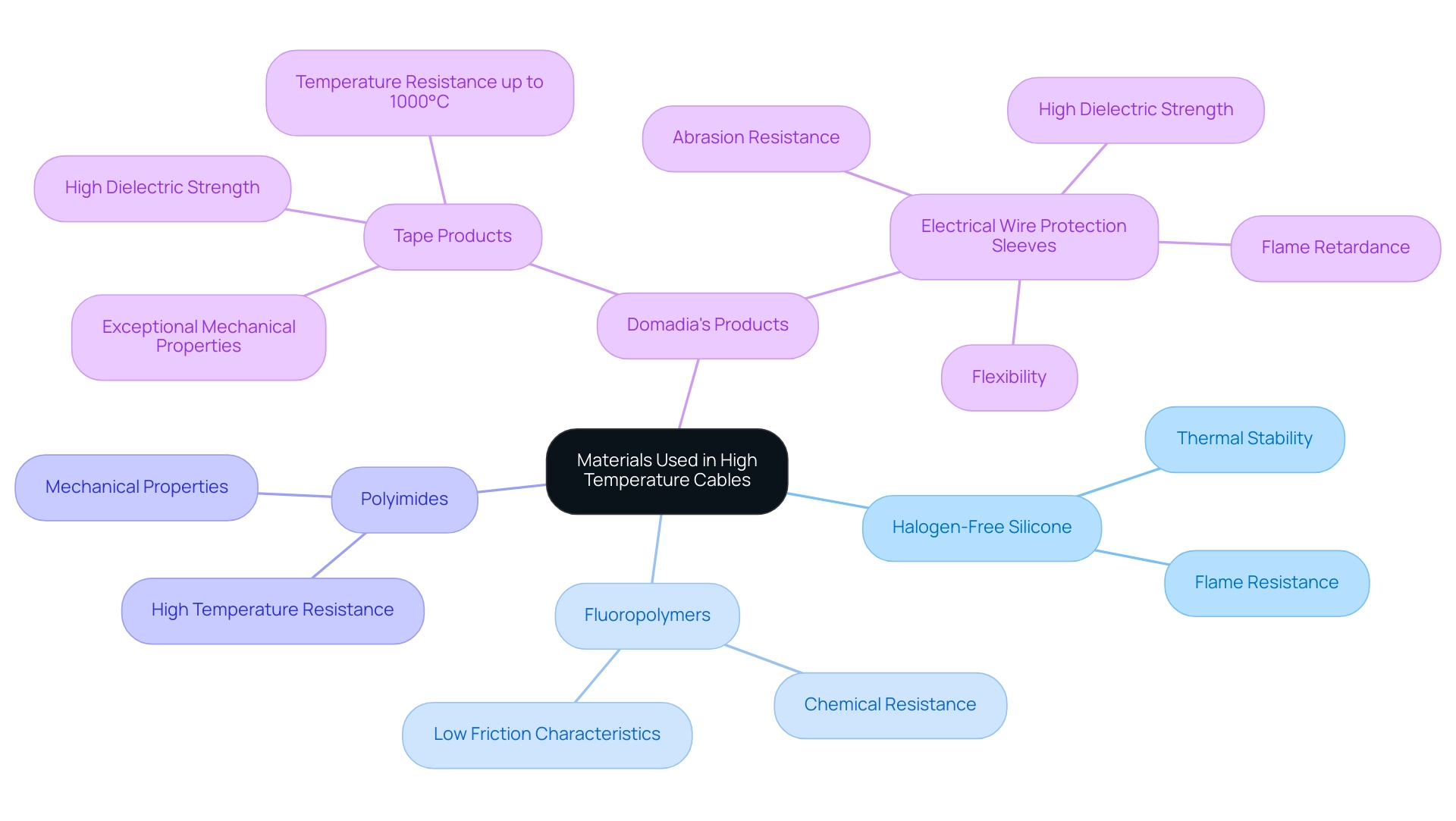
Applications of High Temperature Cables in Diverse Industries
High temperature cables, along with specialized solutions such as Domadia’s Tapes, are utilized in various industries, including:
- Aerospace
- Automotive
- Industrial automation
In aerospace, mica tape is essential for engine wiring and in-flight instrumentation, offering outstanding thermal and electrical protection under extreme conditions. The automotive industry increasingly depends on high temperature cables for electrical applications in electric vehicles and high-performance engines, requiring insulation materials that can withstand both heat and chemical exposure.
Furthermore, in industrial automation, high temperature cables are integral to robotic systems and machinery operating in elevated temperatures, ensuring consistent performance in the most demanding environments.
To explore our range of Mica Tapes and learn how they can benefit your business, visit our website or contact our expert team today.
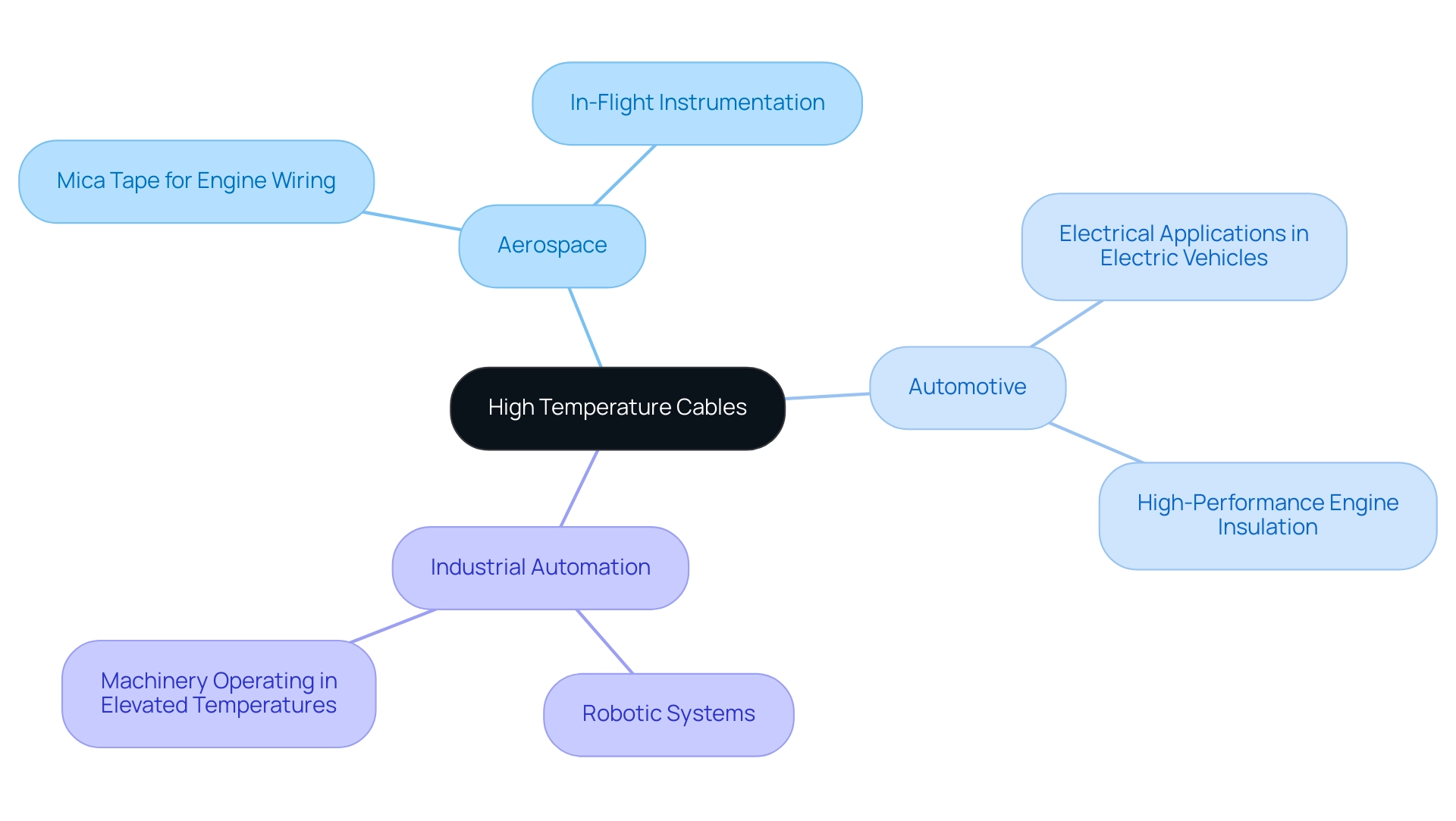
Advantages of High Temperature Cables: Performance and Safety Enhancements
The primary advantages of high temperature cables include their ability to maintain performance in extreme conditions, enhanced safety features, and long service life. These wires are designed to resist thermal degradation, ensuring consistent performance even under prolonged exposure to high temperatures. Many high temperature cables are complemented by high-quality electrical covering sleeves made from silicone and fiberglass, which offer high dielectric strength, flame retardance, flexibility, and abrasion resistance.
The protective sleeves feature a ribbed texture and come in various colors, which not only enhance their grip but also allow for easy identification during installation. This sturdy barrier safeguards against environmental dangers and significantly lowers the risk of electrical failures. Moreover, Domadia’s mica tapes, recognized for their outstanding thermal and electrical protective qualities, are offered in various forms and uses, including:
- Fire-resistant wires
- Protection for critical electrical systems
Their superior reliability translates into increased safety for operators and equipment, making these solutions a critical choice for demanding industrial environments.
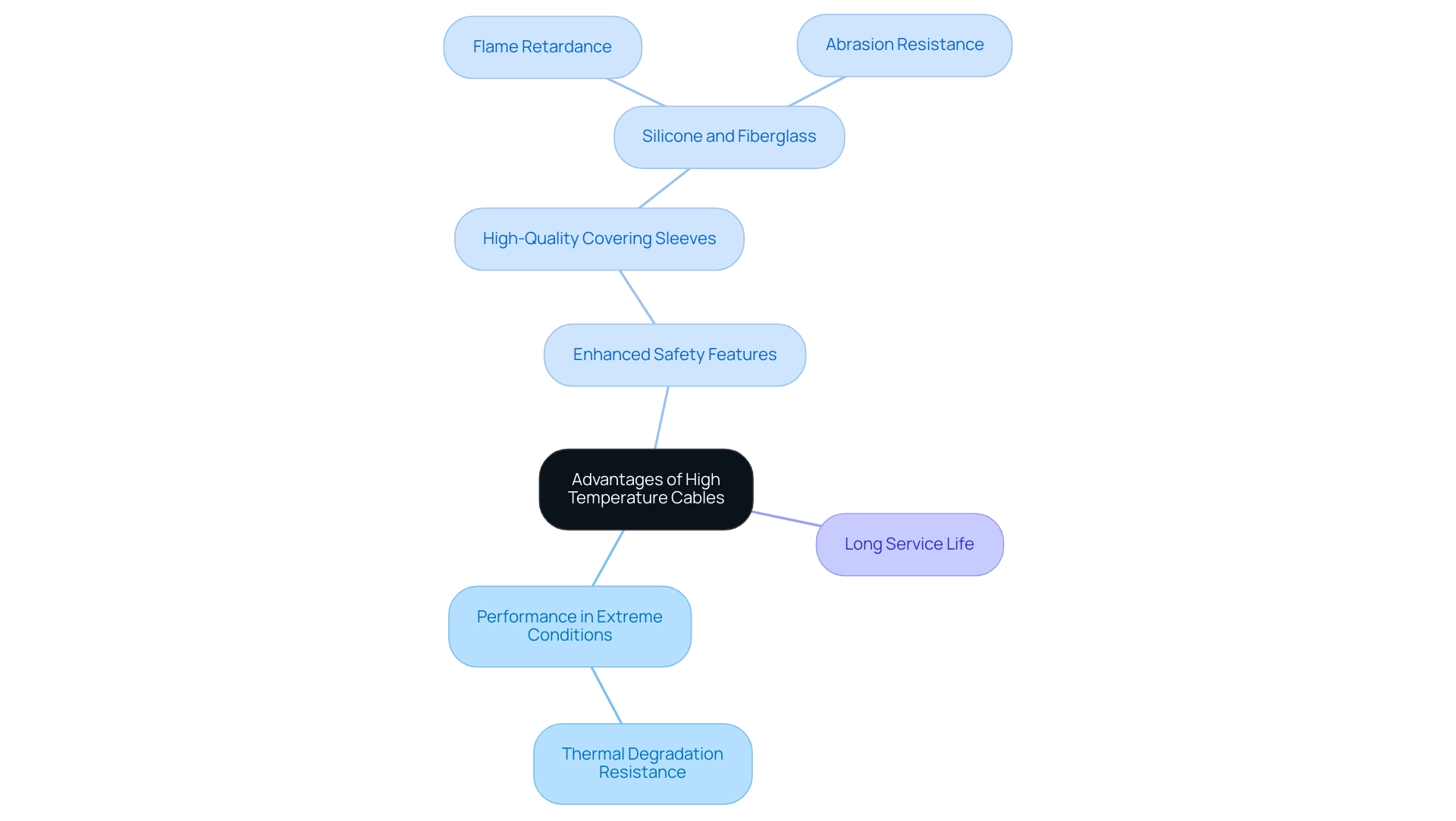
Challenges and Considerations in the Use of High Temperature Cables
Installing high temperature cables presents several critical challenges that engineers must navigate to ensure successful outcomes. One significant factor is the complexity of installation, which can be heightened by the specific requirements of different systems. Proper installation practices are crucial; any missteps in handling can lead to damage to the material, jeopardizing cable integrity and overall performance.
For instance, #8 copper has an ampacity of 50A at 75C, with a temperature correction factor of 0.94, emphasizing the importance of adhering to ampacity regulations during installation. A retired state electrical inspector noted that temperature adjustment factors are applicable only to conductor covering, reinforcing that for a #8 conductor, an adjusted ampacity of 50 amps or higher is acceptable. Moreover, compatibility with existing materials and components must be thoroughly assessed to prevent adverse reactions that could compromise system functionality.
As Jon, an electric motor researcher, pointed out, ‘Does 110.14 force me into sizing per the 75C if that’s what my terminations are, regardless of my wire rating possibly being 90C?’ This raises essential considerations regarding regulatory compliance and material interactions, particularly in light of the case study titled ‘Engineering Justification for Ampacity,’ which discusses whether the NEC requires applying temperature correction factors at terminals. To tackle these challenges efficiently, employing Domadia’s premium insulating materials for electrical insulation is essential.
Our Mica Tapes are rigorously tested to meet international standards, ensuring reliable performance in high-voltage machinery such as electric motors, generators, and transformers, as well as in the manufacturing of fire-resistant materials. Additionally, while high temperature cables may offer superior performance, they often have a higher price tag compared to standard options. Thus, meticulous planning and consideration of these factors, along with the application of reliable thermal barriers, are vital for reducing risks and improving project efficiency, ensuring that the installation meets both functional and budgetary criteria.
We invite you to explore our range of Mica Tapes and learn more about how they can benefit your business, as our customer-centric approach and timely delivery make us a reliable partner in your insulation needs.
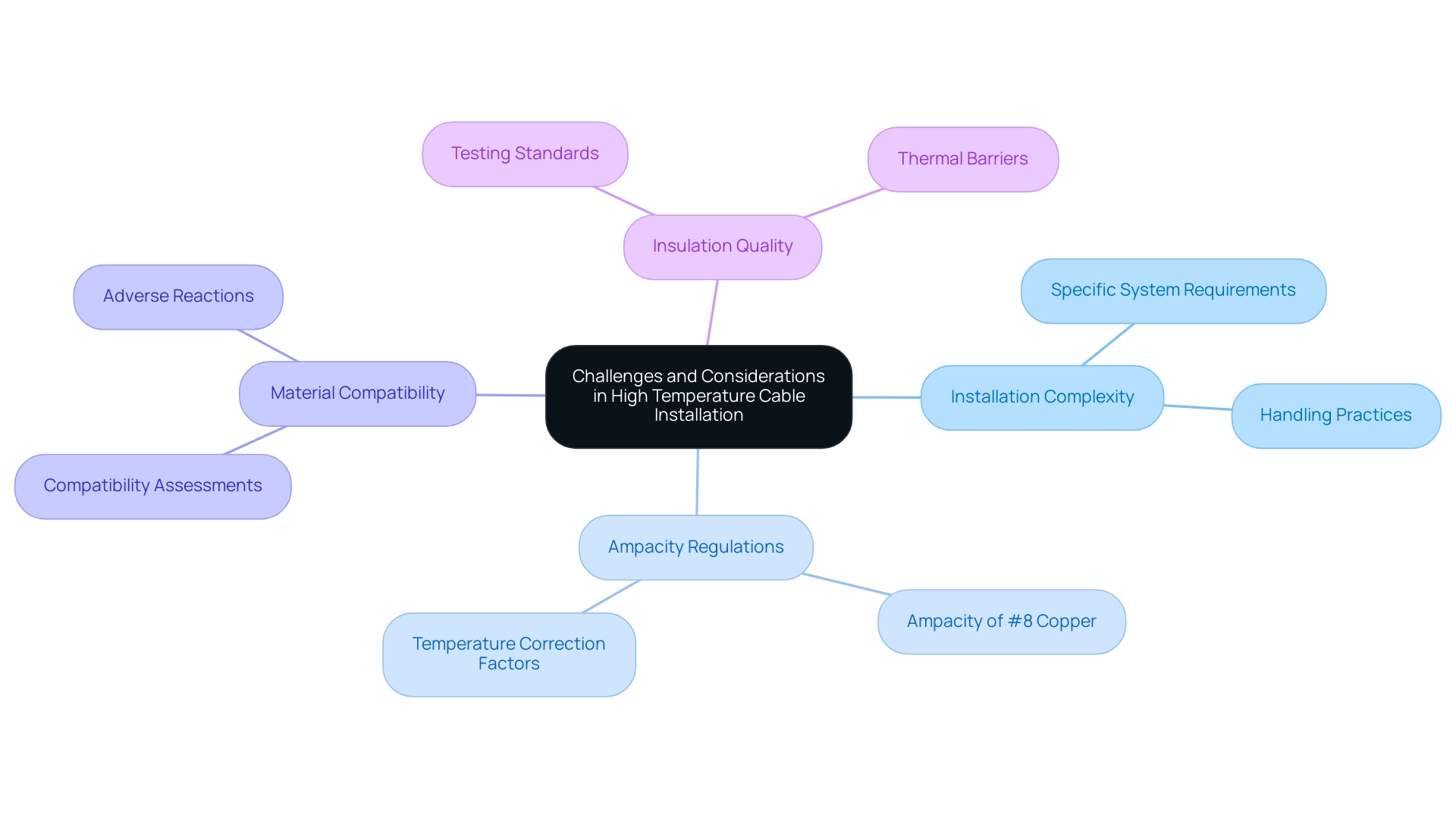
Conclusion
High-temperature cables, particularly those like Domadia’s Mica Tapes, are essential for industries that operate under extreme conditions. These cables are engineered to withstand high temperatures, ensuring safety and performance in sectors such as aerospace, automotive, and industrial automation. By understanding the critical aspects of these cables—including their material composition, applications, and benefits—procurement managers and engineers can make informed decisions that enhance operational integrity.
The advantages of high-temperature cables extend beyond mere performance; they also provide crucial safety features and longevity. Their ability to resist thermal degradation and environmental hazards significantly reduces the risk of electrical failures, making them a reliable choice in demanding applications. However, the complexity of installation and the need for compatibility with existing materials highlight the importance of meticulous planning and adherence to regulatory standards.
In conclusion, selecting the appropriate high-temperature cable solutions is not just a matter of preference, but a strategic necessity for industries pushing technological boundaries. By leveraging the capabilities of advanced materials like Mica Tapes, organizations can ensure reliable performance and safety in their operations. As industries continue to evolve, so too must the approaches to procurement and installation, underscoring the importance of expertise and quality in high-temperature cable solutions.




